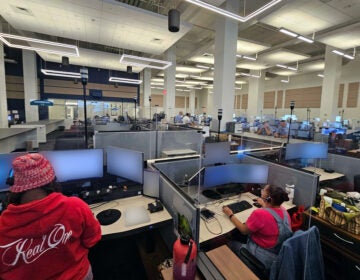Look who’s on the other side of the ‘digital divide’
-
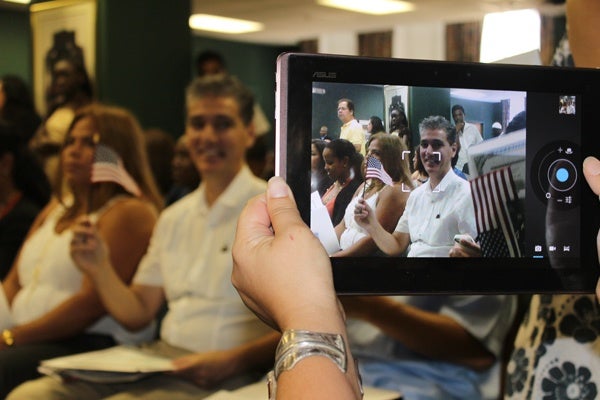
New citizen at Naturalization ceremony in Philadelphia, Pa. (Elisabeth Perez-Luna/WHYY)
-
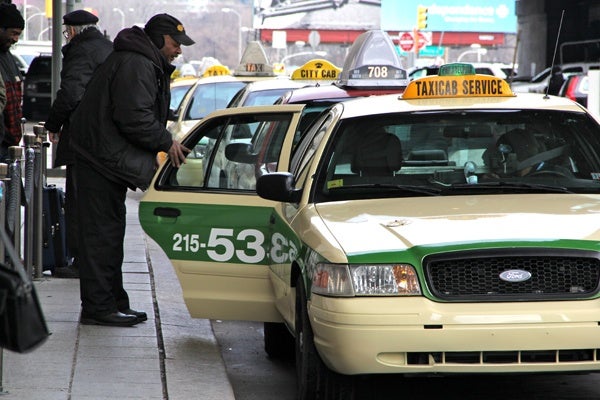
Cabs wait in line for passengers at 30th Street Station. (Emma Lee/for NewsWorks)
-
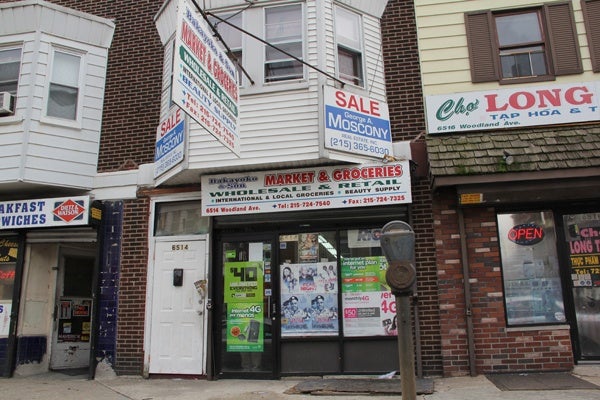
Bakayoko Ben Hassan does a lot of business selling smartphones and other mobile internet devices at his shop on Woodland Avenue. (Emma Lee/for NewsWorks)
-
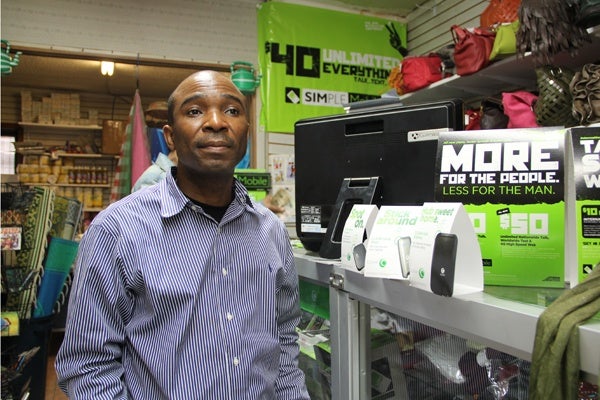
Bakayoko Ben Hassan sells mobile internet devices at his shop on Woodland Avenue. (Emma Lee/for NewsWorks)
Smartphones are the most popular communication tool among immigrants. That may help explain why a new study finds that they tend to use interactive technology at a higher rate that the overall U.S. population. That’s changing not only the image of immigration but also some common assumptions about isolation and assimilation.
Chances are that you’ve been in a cab driven by a man with a Bluetooth glued to his ear, speaking in Uzbek, Wolof, Creole, or Hindi. More often than not the drivers are conducting business around the world and their connection to commerce and family is a smartphone. That’s not surprising says Amanda Bergson-Shilcock of the Welcoming Center for New Pennsylvanians. Immigrants in every profession, she says, are totally connected and tech-savvy.
“We heard a number of stories about how people are taking existing technology and services and repurposing or refashioning them to create new products or new services,” she said.
Bergson-Shilcock led the center’s study “Digital Diaspora” after years of encountering misconceptions about immigrant technological literacy. She found new arrivals harness existing technology for new purposes, such as free conference-call services.
“In some cases, immigrants are using them to launch community radio shows,” said Bergson-Shilcock. “So a taxi driver might be driving around the city and dial into a conference call number using his cell phone and he’ll be listening to a community radio show talking about news from West Africa.”
One of the most popular shows distributed this way is by Ivory Coast radio personality Jacques Roger is based in Washington, D.C.
West Philadelphia shop owner Bakayoko Ben Hassan, not only listens to Internet radio from Africa and Europe, but his store on Woodland Avenue would suffer without smartphone related sales. He uses them to order special groceries and beauty products for his clients and he is a supplier of cell phone products and services.
“Smartphones, I use the computer to sell phone cards, to recharge phones in Africa, money for Africa and around the world. And to recharge T-Mobile, all the phone cards in America here,” he said.
There’s no reason to be surprised at this technological savvy among immigrants. After all, the co-founders of Google and Yahoo are immigrants themselves, says Shenid Bhayroo, a professor at Temple University’s School of Communications. What’s interesting, hey says, is that this knowledge allows us to explore U.S. immigration with a different lens.
“I think what has changed fundamentally now is the ability to communicate in real time,” said Bhayroo. “To be able to squeeze that distance between the continents literally into milliseconds.”
This phenomenon is not lost to service providers. If you look closely, you can see Cricket and Verizon dealers in every minority and immigrant community in the area. Vonage, for instance, has a whole ad campaign directed to the immigrant consumer who want to have inexpensive phone access to family and friends abroad.
This constant digital communication, says the Welcoming Center’s Bergson-Shilcock, translates into a fluid, almost undetected parallel world of personal and cultural interaction, commerce and civic participation. So, for most immigrants, regardless of their education and economic status, digital technology is already common currency.
“Forty percent of Latino immigrants are coming from countries where mobile is more broadly used than broadband and land lines as well,” she said.
Using a recent Pew Internet and American Life Project as a comparison, the Digital Diaspora study notes that 45 percent of U.S. adults own a smartphone while 68 percent of the immigrant respondents had one. Most tended to purchase unlimited plans covering data, texting and phone calls.
Immigrant service organizations are using this connectivity to spread information ranging from prenatal care and voter registration, to legal and business training. They also use it to teach English.
Families stretched over continents use it to celebrate. Family events, birthdays and weddings are shared, as they happen, via Skype.
It a small glimpse of the global village.
WHYY is your source for fact-based, in-depth journalism and information. As a nonprofit organization, we rely on financial support from readers like you. Please give today.


